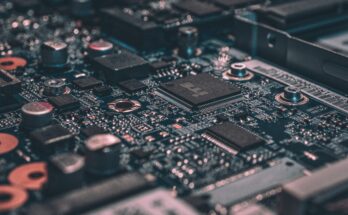Almost always, a PC used for a home office is a laptop. But there are more choices. To experience what it’s like to have a mini-PC on the desk, we used a Gigabyte Brix as a work computer for a while. A mini PC is a great investment for an office.
Given the hybrid workplace we are going toward, choosing a laptop may seem like a no-brainer. It is convenient to use the same PC for both if you work partially in the office and partially from home during the week. A laptop, however, also has significant drawbacks.
Even if you have a laptop with a mobile processor from the highest divisions of AMD or Intel, most laptops don’t give all that much in terms of performance. Multiple high-resolution monitor connections frequently fall short of expectations. In addition, to have adequate connections for all of your devices, you often need something like a docking station.
Replacements for the laptop
You have a few choices if you’re not entirely sold on getting a laptop for your (home) office and want to do a little more research. Of course, you can choose a traditional tower PC, but many individuals will likely find that to be too large. It’s also not necessary if you don’t require a physically massive (PCIe) expansion or a separate strong graphics card.
Read Also : VPS hosting: how to choose the right one
Mini PC
Here, we aim to emphasize the mini-PC as an ultimate laptop substitute for home offices. This category includes the Gigabyte Brix, which we shall discuss later. This sort of PC’s name describes what it is. It is a bit of a PC. Except for the screen, of course, the internal components are identical to those of a laptop but are housed in a much smaller case.
Full-featured network connectivity, including Ethernet in addition to WiFi and Bluetooth, and a large selection of connectors, are advantages of a mini-PC. You can frequently connect up to four monitors at once with the higher-end versions. Because a mini-PC is small, you may frequently hide it discreetly.
This can be accomplished, for instance, by mounting the monitor using a VESA mount kit that is frequently included with the mini-PC. It now has a form factor ideal for a tidy home office. It also provides advantages for point-of-sale or digital signage applications.
Of course, a mini-PC has drawbacks as well. The biggest drawback is that many models ship with minimal features by default. In other words, you only receive the housing when you purchase a motherboard and a processor.
A Windows license, SSD, and RAM are frequently things you have to add on your own. That should be considered, even if it’s not an impossible issue in and of itself. Of course, fully “completed” mini-PCs are also offered for sale.
Furthermore, the more powerful models may cool somewhat enthusiastically due to the interaction of a tiny housing and a relatively strong processor. Since mini-PC fans are naturally small, they frequently produce the most significant noise.
The absence of a monitor in a mini-PC is another clear drawback. It would help if you got a different monitor. Finally, although you can transport a mini-PC to another location if you wish to, its form factor is not specifically designed for mobile use.
As we just established, mini-PC internal parts are typically not all that different from laptop internal parts. In other words, they also include portable processors. Simply put, a desktop processor won’t fit.




